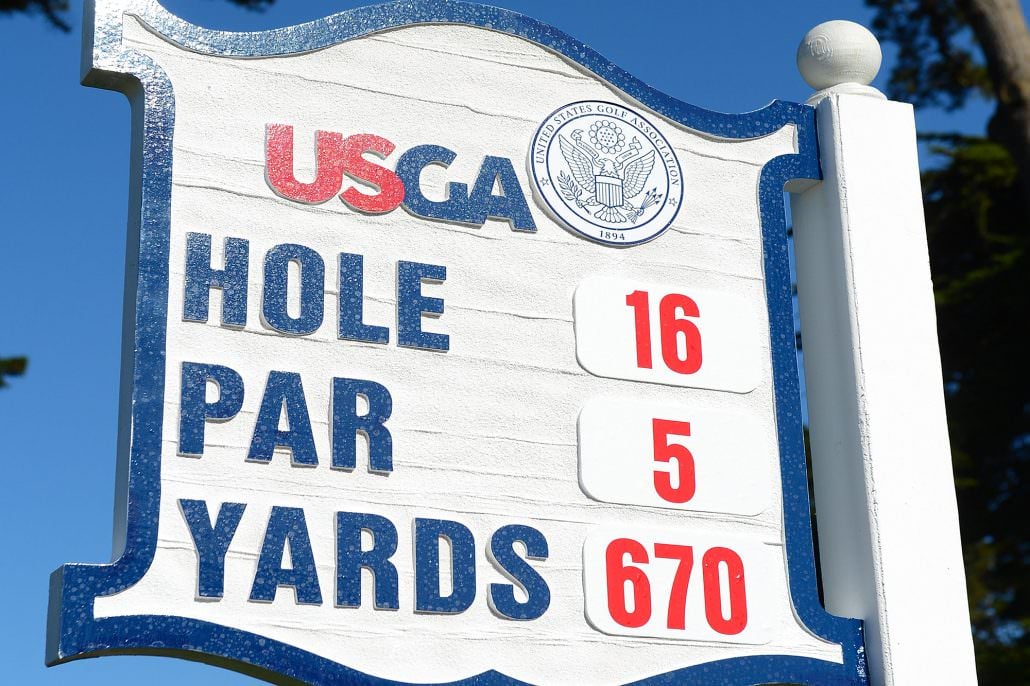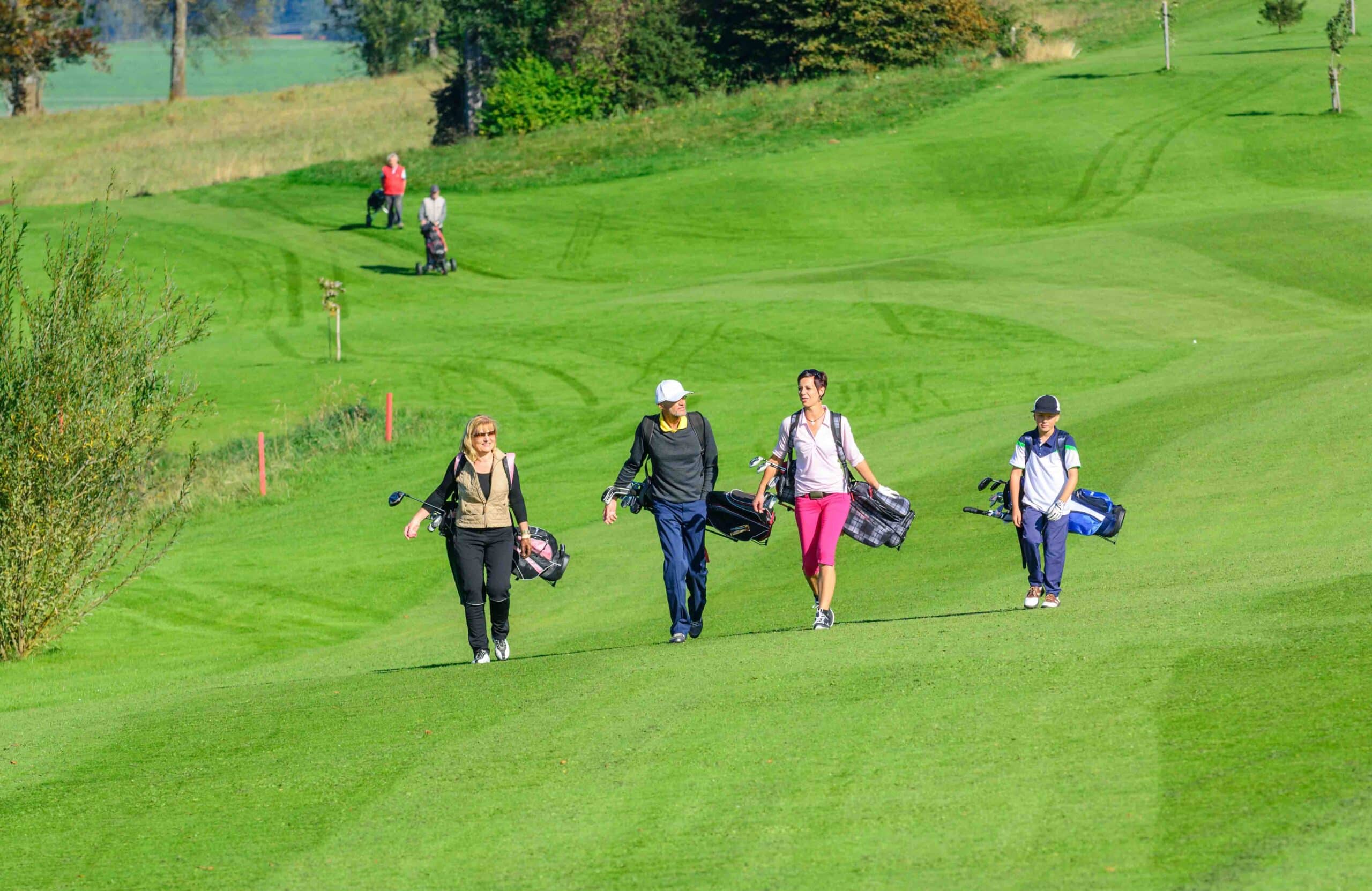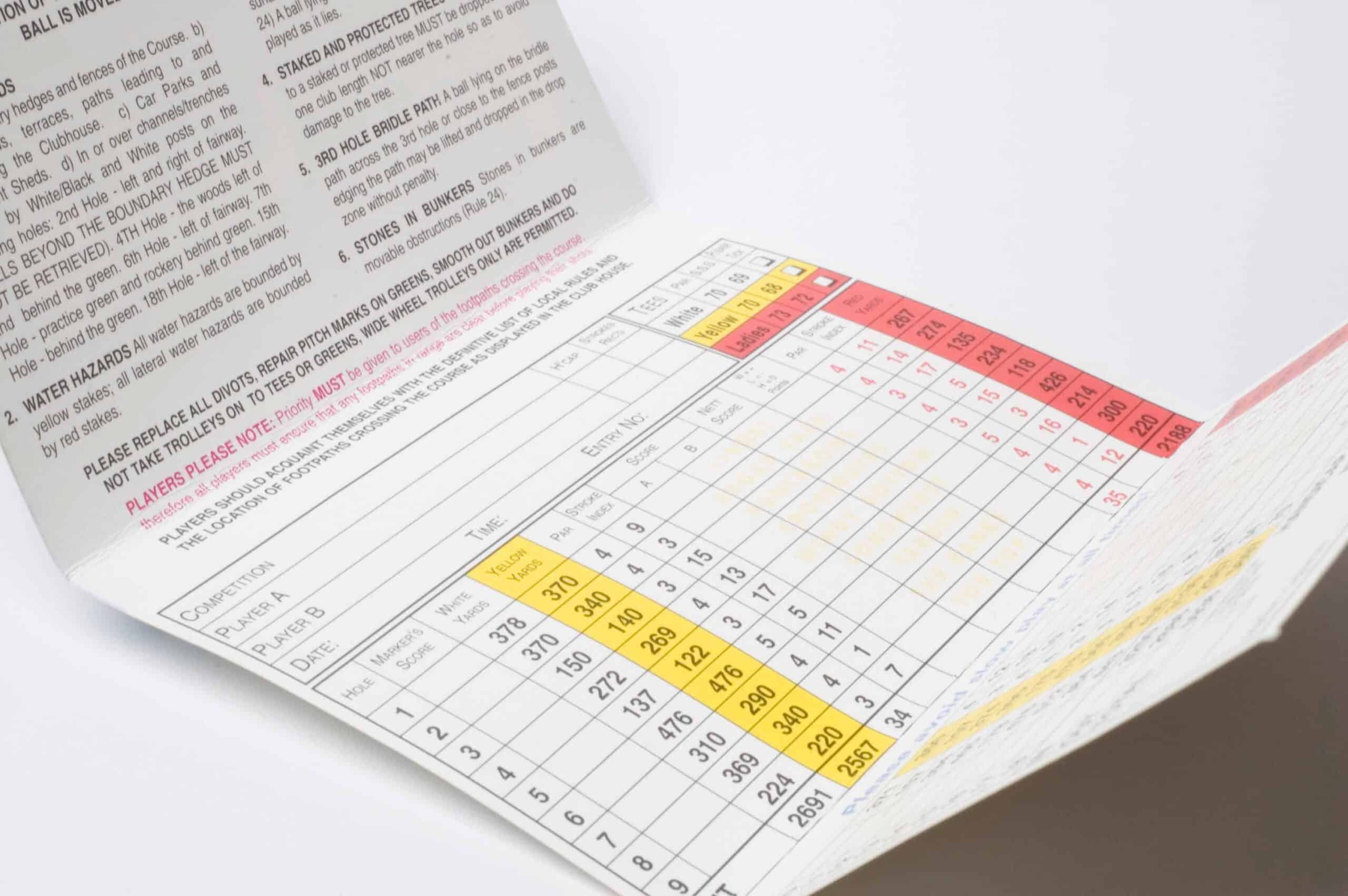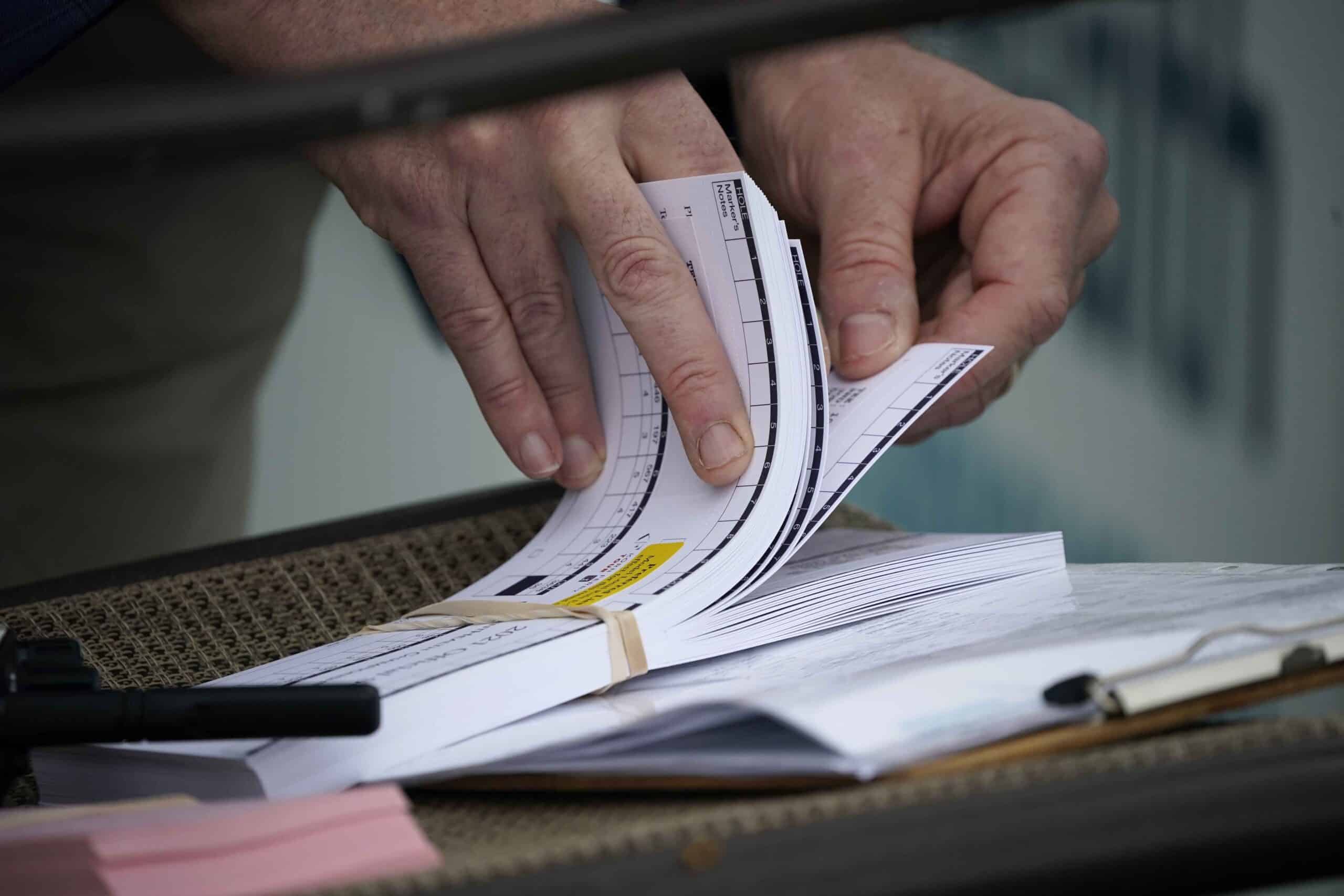
How does the USGA course rating system work?
It is a crucial part of the World Handicap System. But what does the USGA Course Rating system do? Steve Carroll explains
The USGA Course Rating System is a pivotal part of the World Handicap System. So what is it, and how does it work? Let’s dive in with Gemma Hunter, England Golf’s head of handicapping and course rating…
What is the USGA course rating?
England Golf put it very succinctly. It is the “evaluation of the playing difficulty of a course for scratch golfers under normal course and weather conditions.
“It is expressed as the number of strokes taken and is based on yardage and other obstacles to the extent that they affect the scoring difficulty of the scratch golfer”.
But I’m not a scratch golfer. So how does it affect me?
Well, the system also supplies a bogey rating. That looks at the course through the eyes of average golfers and again assesses yardage and scoring difficulty for them. Slope then calculates the handicap based on the mark of a player.
The difference is that the bogey rating is only used when slope is introduced. It is not used in the calculation of the scratch score.
How is it calculated?
England Golf have a process they refer to as ‘Form 1’. It covers all the factors needed to effectively rate just one hole.
It’s filled with descriptive phrases such as squeeze (when you have the same obstacle on either side of a landing zone), jeopardy (when a player can play away from the obstacle, without causing a disadvantage) and unpleasant (when the obstacle causes an unpleasant situation that affects the playing of the hole).
“The reason we have done it in so much detail is that we don’t want anyone to miss anything,” says Gemma Hunter, England Golf’s handicap and course rating manager.
“It’s a big piece of work and a full course rating takes the speed of fourball. It’s about three-and-a-half or four hours on the golf course.”
So what factors are taken into consideration when assessing each hole?
Effective playing length
This considers if the hole is really longer or shorter than the actual measured length on the scorecard.
It looks at the impact of roll and elevation – is a player hitting into raised greens or from fairways where the ball is below the feet?
Doglegs and layups are taken into account. How much longer or shorter does a hole play because of the bend?
One area where the USGA Course Rating system is a marked improvement over the old standard scratch is in the consideration of how wind affects the length of a course.
Hunter adds: “That’s one thing the old system wasn’t very good at measuring. It was very inconsistent. They used to stick a figure at the end and say ‘that’s a wind figure’.
“It was ‘is it a parkland, a moorland, a links course?’ Those were the only three options. There was no scope.
“The idea is that we can put a wind measurement in and say ‘actually, we’re on the top of a hill, in Yorkshire, the course is going to be affected by wind nine times out of 10. Therefore, we will give it a little bit extra in terms of a wind rating.
“Some of that is subjective because, hopefully, the course raters know the courses. They are from the area and they can say ‘actually, we know wind is a major factor up here. Therefore we will go slightly higher on a wind rating’.”
Obstacles
The USGA Course Rating system looks at each landing zone for both scratch and bogey golfers. There’s a designated shot length for men and women. Nearly a dozen different calculations are made on every single hole.
Topography: How flat is the stance? How easy is it to play the next stroke?
Fairways: How wide is it? Is it easy to keep the ball on the fairway? What hazards, rough or trees are potential traps? Which way will the ball bounce?
Green target: This measures how difficult it is to hit a green. “We look at the size of the target and look at how far the approach shot into that target has got to be,” says Hunter.
“We also look at what’s protecting that green, so are there bunkers?”
Bunkers: Any bunker that is in a landing zone is looked at. Bunker placements on the fairways are studied. A measurement is calculated on how difficult it may be to recover when a ball lands in one.
Rough: How high is it? How punishing is it if you find it after missing a fairway? How difficult is the recovery?
Linked with this is the subject of extreme rough and out of bounds. Extreme rough is considered to be an area where a player may lose a ball. Out of bounds is considered in a similar vein as both see the ball declared to be either lost or virtually unplayable.
Water hazards: How far is it away from a landing zone or the green? Is there any difficulty playing over it?
Trees: How big are they? How thick? How hard is it to get out of them? Where are they from the centre of the landing zone, or the green?
Green surfaces: “You’ve seen the greens on the Bracken course at Woodhall Spa. Some of those look like they have got elephants buried under them, there is that much slope,” explains Hunter.
“That can have a massive effect on the playability of a green so we look at how flat are they? What is the contouring like? We look at how big the green is overall and what the stimp – the speed of the green – is.
“We ask the greenkeepers to give us their stimp readings – their average median through the year – and then we do it ourselves.”
Each of those assessments are taken hole-by-hole and, once all of that information comes together, a psychological evaluation is produced.
Psychological: It’s the overall effect of all the obstacles. The value is mathematical and is only added on after the on-course rating is complete.
Hunter explains: “This is a bit finger in the air but it’s how the ratings – water, trees, green surface and so on – might affect a player’s psychological approach to that hole.
“If the other rating values are really high, then the psychological rating kicks in. If they are average or low, then it is disregarded and it’s not going to have much impact.
“The higher the number of each of the other hazards, the bigger the psychological rating they are likely to get. It’s only really included on holes 1 and 18.
“It’s more highly weighted there because of the natural psychological element of standing on a first tee – where you are going to stick the ball – and coming in on 18. You’ve got a good score in your hand and you’ve got to go over a pond.”
If it all seems a big job then you’re right – it is. But Hunter thinks the USGA Course Rating system is a far more accurate barometer of the difficulty of a course than the old SSS measurements utilised by the previous CONGU system.
“The old SSS was very much – this is the length, this is what we are dealing with and giving it a number. A lot of the old SSS could have been purely done by yardage,” she said.
“It doesn’t weigh up because there aren’t two or three 6,000-yard golf courses that are the same. They differ so much.
“You could have quite an easy 6,000-yard course or a very difficult one. In the old system, they would both have a rating of 69.
“It’s not reflective of what you are actually playing. The USGA Course Rating system is far more reflective of the course you are actually playing.”
Steve Carroll

A journalist for 25 years, Steve has been immersed in club golf for almost as long. A former club captain, he has passed the Level 3 Rules of Golf exam with distinction having attended the R&A's prestigious Tournament Administrators and Referees Seminar.
Steve has officiated at a host of high-profile tournaments, including Open Regional Qualifying, PGA Fourball Championship, English Men's Senior Amateur, and the North of England Amateur Championship. In 2023, he made his international debut as part of the team that refereed England vs Switzerland U16 girls.
A part of NCG's Top 100s panel, Steve has a particular love of links golf and is frantically trying to restore his single-figure handicap. He currently floats at around 11.
Steve plays at Close House, in Newcastle, and York GC, where he is a member of the club's matches and competitions committee and referees the annual 36-hole scratch York Rose Bowl.
Having studied history at Newcastle University, he became a journalist having passed his NTCJ exams at Darlington College of Technology.
What's in Steve's bag: TaylorMade Stealth 2 driver, 3-wood, and hybrids; TaylorMade Stealth 2 irons; TaylorMade Hi-Toe, Ping ChipR, Sik Putter.










